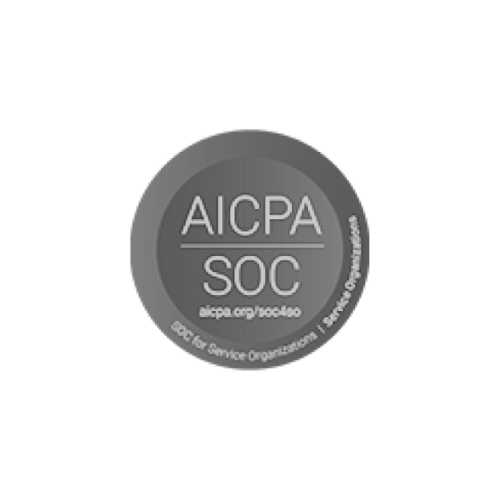The IT industry is evolving at an unprecedented pace, and with this rapid development comes a heightened level of scrutiny in hiring processes.
As a hiring authority, you no longer look at only the technical skills and educational qualifications of potential hires. You also need to consider the candidates’ employment histories.
One key area of focus is employment gaps. These gaps can sometimes be a red flag for employers, raising concerns about a candidate’s reliability, commitment, and skills relevancy.
For candidates, being aware of how these gaps are perceived and how to address them can significantly improve their chances of securing a job.
What are Employment Gaps?
Employment gaps refer to periods during which a job seeker was not employed in a formal job.
These gaps can vary in length from a few months to several years and can occur for various reasons.
Common Causes of Employment Gaps
Personal Reasons: Health issues, family responsibilities, or personal crises often necessitate taking a break from professional life.
These are often unavoidable and can reflect the candidate’s ability to prioritize and manage personal challenges.
Economic Downturns: During recessions or industry-specific downturns, even highly skilled professionals might find themselves out of work.
Such gaps can demonstrate resilience and the ability to navigate through tough economic conditions.
Skill Enhancement or Education: Many professionals take time off to further their education, gain new certifications, or learn new technologies.
This type of gap often indicates a proactive approach to career development and skill enhancement.
Relocation: Moving to a new city or country can lead to temporary employment gaps as individuals settle in and search for new job opportunities.
Travel and Sabbaticals: Some individuals take extended time off for travel or personal enrichment, which can be a positive experience contributing to personal growth and broadened perspectives.
Career Transition: Shifting from one career path to another often involves a period of unemployment while acquiring new skills and credentials.
Entrepreneurial Ventures: Starting a business or working on a personal project can lead to gaps in traditional employment but also showcase initiative and entrepreneurship.
Typical Perceptions and Misconceptions
Employment gaps are often viewed with a degree of skepticism by hiring managers, who might worry about the candidate’s commitment, consistency, and up-to-date skills.
However, these gaps can also be indicative of personal growth, resilience, and the ability to adapt to new circumstances.
By understanding the true nature and reasons behind employment gaps, both employers and candidates can approach them more constructively.
The Relevance of Employment Gaps in the IT Industry
Fast-Paced Technological Changes
The IT industry is characterized by its rapid pace of technological advancements.
New programming languages, frameworks, and tools emerge frequently, making it essential for IT professionals to continuously update their skills.
Employment gaps can be a significant concern in this context, as a prolonged absence from the industry might mean a candidate has missed out on learning and adapting to these new technologies.
Skill Obsolescence Concerns
Skill obsolescence is a major issue in the IT industry. Technologies that were cutting-edge a few years ago can quickly become outdated.
Employers need to ascertain whether a candidate with a gap in their employment history has made efforts to keep their skills relevant through continuous learning or freelance work.
Project-Based Nature of IT Roles
Many IT roles are project-based, involving short-term contracts or freelance work. This can naturally lead to employment gaps between projects.
Evaluating the quality and relevance of completed projects during these gaps can provide valuable insights into a candidate’s capabilities and work ethic.
Pre-Employment Verification: Checking Employment Gaps
Pre-employment verification is a critical process for employers to ensure that the information provided by a candidate is accurate and reliable.
This process includes verifying employment history, educational qualifications, and professional references.
Methods of Detecting Employment Gaps
Resume Analysis: A detailed examination of the resume can reveal employment gaps.
Look for unexplained periods between jobs and seek clarification during the interview process.
Background Checks: Conducting thorough background checks can confirm the accuracy of the employment history provided.
This includes contacting previous employers and verifying the duration of employment.
Reference Verification: Speaking with references can provide additional insights into the candidate’s employment history and the reasons behind any gaps.
Importance of Thorough Verification
Ensuring Skill Relevance: By verifying employment gaps, you can ensure that a candidate’s skills are up-to-date and relevant to the current job market.
Assessing Candidate Reliability: Thorough verification helps in assessing the reliability and honesty of a candidate.
It provides a clear picture of the candidate’s career trajectory and helps you in making informed hiring decisions.
The Impact of Employment Gaps on Hiring Decisions
Assessing the Reasons Behind Gaps
Valid vs. Questionable Reasons: As an employer, you need to differentiate between valid reasons for employment gaps, such as further education or personal health issues, and questionable ones.
Evaluating Honesty and Transparency: A candidate’s willingness to discuss and explain employment gaps openly can be a good indicator of their honesty and integrity.
Potential Red Flags
Frequent Job Hopping: Consistently short stints at multiple jobs can indicate instability or difficulty in maintaining employment.
Unexplained Long Gaps: Gaps without a reasonable explanation can be a red flag for potential issues.
Gaps Following Terminations: Employment gaps that follow job terminations might indicate performance issues.
Lack of Skill Development During Gaps: Gaps without any evidence of skill enhancement or professional development can be concerning.
Inconsistent Employment History: A history that shows frequent or long gaps might suggest unreliability or other underlying issues.
Positive Perspectives on Employment Gaps
Career Breaks for Skill Enhancement: Employment gaps taken for skill enhancement, such as further education or certifications, can be seen positively as they demonstrate a commitment to personal and professional growth.
Personal Development and Readiness: Gaps taken for personal development, such as travel or sabbaticals, can provide candidates with broader perspectives and renewed readiness to re-enter the workforce with fresh energy.
Post-Employment Verification: Monitoring Consistency
Post-employment verification involves ongoing checks and monitoring after a candidate has been hired.
This ensures that the employee continues to meet performance standards and adheres to company policies.
It also helps in identifying any emerging gaps in performance or skills that need to be addressed.
Address Gaps After Hiring
Continuous Skill Development: Encourage your employees to engage in continuous learning and skill development to stay relevant in the fast-paced IT industry.
Performance Monitoring: Regular performance reviews and feedback sessions can help identify any gaps in skills or performance early on and address them promptly.
Identify Emerging Gaps
Consistent monitoring can help identify any emerging gaps in an employee’s performance or skills.
Addressing these gaps proactively can prevent them from becoming significant issues and ensure that the employee remains productive and valuable to your organization.
Role of HR in Managing Employment Gaps
HR plays a crucial role in managing employment gaps by providing support and resources for continuous learning, facilitating performance reviews, and offering guidance on gaps effectively.
Consulting a Post-Employment Verification Company
Engaging a professional post-employment verification company can provide additional assurance and expertise in monitoring and managing employment gaps.
Conclusion
Employment gap checks are crucial in the IT industry due to the rapid pace of technological changes and the need for up-to-date skills.
Understanding the reasons behind gaps, conducting thorough pre- and post-employment verifications, and addressing gaps proactively can benefit both employers and job seekers.
Employment gaps are not inherently negative and can often indicate personal growth, skill enhancement, or resilience.
By approaching these gaps with an open mind and thorough verification processes, you can make informed hiring decisions and candidates can present themselves in the best possible light.
Partnering with AMS Inform for Employment Gap Checks
Because of the complexity and significance of verifying employment gaps, many companies opt to collaborate with AMS Inform.
Since its inception in 1986, AMS Inform has built up more than 38 years of expertise in the background verification industry.
Our team is proficient in checking employment gaps, as well as Digital ID Verification, identity verification, educational verification, and pre/post-employment verification. Additionally, we offer a wide range of services including credit checks, health and drug screenings, insurance claim investigations, and language translation.
With our presence in over 160 countries and local teams in 16 of them, we are equipped to support your global operations effectively.
As a proud member of the NASSCOM and PBSA family, we are dedicated to safeguarding the health and reputation of your business.
Reach out to our team today for personalized solutions tailored to your Employment gap-checking requirements.

















